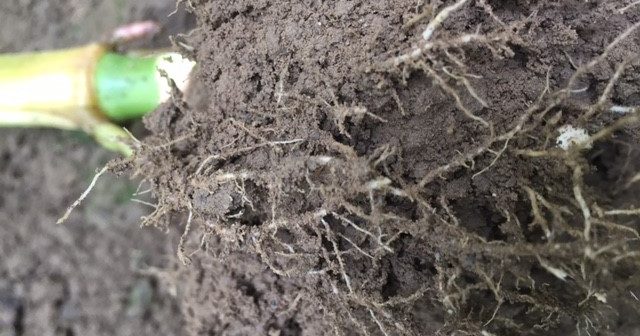Maize growers are being urged to make the most of high organic matter inputs to help bring down overhead costs while improving soil structure, plant health and maximising yields.
George Hepburn, biological soils expert at QLF Agronomy, explains why growers should not overlook naturally derived fertilisers such as farmyard manure (FYM).
“Many growers under-value FYM and see it as a bulky and heavy waste product. However, when managed and applied correctly it can be one of the best forms of fertiliser,” he says.
“What’s more, these types of fertiliser are generally free, making them very cost effective. And when you start to look at the nutritional value per tonne, you suddenly see it in a different way.
“For example, taking into account current fertiliser prices and assuming 25% dry matter (DM), cattle FYM can provide 6 kg/t of N, 3 kg/t P and 8 kg/t of K, coming in at a value of over£10/t*, of which half will be available to the next crop.
“This means that at a typical application rate of 25 t/ha, cattle FYM can provide up to £125 worth of available nutrients that don’t need to be paid for.”
George highlights that these amounts can vary depending on how well rotted the FYM is and how much DM it contains. “It’s therefore really important to get your inputs analysed to ensure you are not putting too much on and affecting the natural soil balance.”
As well as reducing input costs George also stresses the wider impacts that FYM can have on long-term plant and soil health.
“FYM not only provides N, P and K but is also high in organic matter, meaning that it helps to improve soil structure, and provides a food source for the soil biology.
“However, to unlock its full potential I’d recommend including a carbon source, such as molasses, pre and at planting. This really helps stimulate the soil biology by providing an energy source which aids the break down of the organic matter in FYM into a more readily available format for the plant in a shorter time period,” he says.
This has been shown in a recent maize trial where liquid carbon based fertiliser (L-CBF), BOOST, was used 20 l/ha pre and post emergence. The trial demonstrated up to 11% increase in yield and a significant increase in starch with quicker emergence and larger root mass, compared to a control group which had no L-CBF BOOST.
“This is mainly due to better availability of nutrients which meant that crops were able to get up and away from pests and diseases and build better root structures,” says George.
He explains that increasing root structure and quicker emergence will be even more important this season to reduce the impact of water logging and compaction.
“Maize growers really need to think about soil health this year, especially where maize is being grown continuously, as it struggles in compacted soils and often suffers yield losses. Robust tillage and the fact that it needs to be harvested with heavy machinery at time when conditions can be wet are the main causes for compaction.
“Therefore, including a naturally derived fertiliser which improves soil structure and maximising its availability with a carbon source could be extremely valuable this season to not only help the bottom line, but to mitigate the effects of poor weather conditions,” he says.




